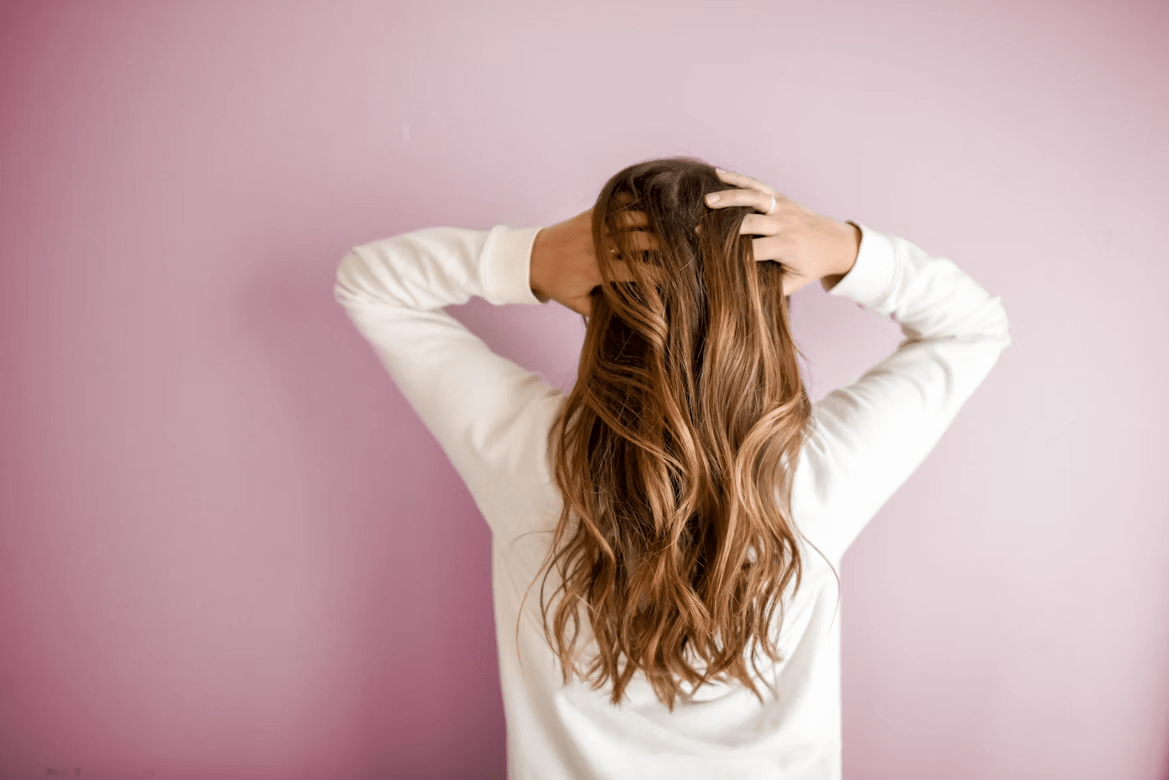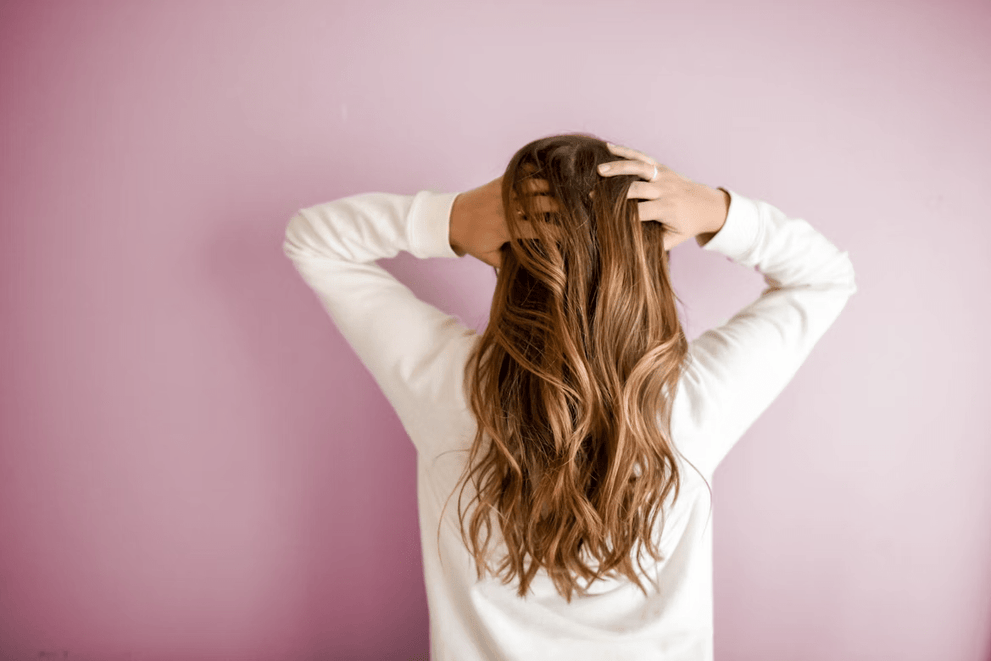Key Takeaways:
- Hair Loss From Psoriasis: Scalp psoriasis can sometimes lead to temporary hair shedding or breakage. The good news is that most people see their hair grow back once the inflammation, scaling, and scratching are under control.
- Why Psoriasis Hair Loss Happens: Plaques and thick scales tangle hair; scratching and forceful combing cause breakage; inflammation can nudge follicles into shedding; stress and some medicines add to the problem.
-
Fighting Psoriasis Hair Loss: Pair your dermatologist’s plan with simple routines and supportive nutrition.
Yes,but usually it’s temporary. During scalp flares, shedding or breakage can happen, but most people see regrowth once plaques and itching are under control. True scarring is rare, though inflammation, scratching, and rough scale removal can make thinning look worse in the moment.
Where Broc Shot fits in: We focus on simple, supportive nutrition built around natural sulforaphane from whole broccoli seed powder. It’s highest-quality, third-party tested, and easy to take daily with or without food. Clinically studied for its ability to activate NRF2—the body’s natural antioxidant defense switch—natural sulforaphane supports detoxification, helps calm inflammation, and promotes gut balance. Used consistently alongside your dermatologist’s care plan, it offers whole-body support that complements your existing health routine.
Broc Shot is the first supplement to be recognized by the National Psoriasis Foundation.
Why Psoriasis Can Lead to Hair Loss
Although most hair loss is temporary, here’s how scalp psoriasis affects skin and strands.
- Inflammation Shifts the Hair Cycle: Active plaques release inflammatory signals that can push follicles into a resting (telogen) phase, leading to increased shedding a few weeks later.
- Scale and Plaques Create Friction: Thick, adherent scale tangles hairs, causing them to snap during washing, brushing, or rough scale removal.
- Scratching and Traction Add Trauma: Itch drives rubbing, picking, tight styles, and hat friction; this “mechanical stress” loosens hairs and breaks fragile ends.
- Koebner Phenomenon (Injury → New Plaques): Cuts, sunburns, or scratches can trigger new plaques on the scalp, extending the cycle of irritation and loss.
- Triggers Amplify the Problem: Infections (especially strep), stress, cold, dry weather, and certain medications can flare the scalp and increase shedding. If you’re interested in what causes psoriasis flare-ups, check out our website for more information.
True scarring from psoriasis is uncommon. Once inflammation settles and trauma stops, hair regrowth is possible. Your dermatologist can speed that process with targeted care and technique guidance.
Do You Have Psoriasis?
Wondering how to know if you have psoriasis? Look for sharply bordered, scaly plaques on the scalp, elbows, knees, or lower back; itch can vary, and nails may show tiny pits or lifting. Flares often follow infections, skin injury, certain meds, stress, or cold, dry weather. Patterns help your clinician make the call. Because eczema, dandruff, and other rashes can look similar, a dermatologist’s exam is the best route to diagnosis.
Common Body Sites and Patterns
Psoriasis often shows up on the scalp, elbows, knees, and lower back. Lesions are usually sharply bordered with stacked, silvery scales that tend to appear symmetrically. Itch can range from mild to intense, but plaques typically feel thicker and tighter than eczema.
Nail Changes to Look Out For
Look for tiny pits on the nail surface, color changes, crumbling, or lifting from the nail bed. These clues support a psoriasis diagnosis and are helpful to mention at your visit. Bring close-up photos if the changes come and go.
Scalp Signs Vs. Dandruff
Dandruff flakes are usually finer and more diffuse, while scalp psoriasis forms well-defined, thicker plaques that can extend beyond the hairline. If plaques itch and you notice short, broken hairs or shedding during flares, note that pattern for your clinician. Avoid picking scale, which can worsen irritation.
When It Might Be Something Else
Conditions like eczema, tinea (fungal infections), or alopecia areata can mimic parts of psoriasis. Sudden smooth bald patches, ring-shaped rashes, or weepy, oozy lesions merit a check. A dermatologist can examine the skin, nails, and scalp, and order simple tests when needed.
Why Psoriasis Can Lead to Shedding
Scalp psoriasis can lead to hair loss for several straightforward reasons. The buildup of thick plaques and scales creates friction, which may cause strands to snap during combing, washing, or if the scales are removed too aggressively. Persistent itching often results in rubbing and scratching, which can loosen hair and irritate the follicles. In addition, inflammation itself can shift more hairs into the “resting” (telogen) phase, meaning extra shedding might not appear until weeks or even months later.
Certain triggers can make this worse—such as strep infections, dry cold weather, stress, specific medications, tight hairstyles, and frequent use of hot styling tools. The reassuring part is that when inflammation settles and the scalp has time to recover, most people experience normal, healthy regrowth.
Practical Ways to Protect Your Hair During Flares
Think of your scalp and hair as delicate fabric—gentle care makes a big difference.
Go Gentle
- Keep showers short and lukewarm.
- Use mild, fragrance-free cleansers.
- Soften and loosen scale per your dermatologist’s instructions—don’t pick.
- Detangle with a wide-tooth comb and pat hair dry.
Soothe the Scalp
- Apply prescribed topicals to parted sections so medication reaches the skin.
- Let treatments sit as directed.
- Avoid layering multiple products that could increase irritation.
Reduce Friction
- Choose loose hairstyles; avoid tight ponytails, braids, or extensions during flares.
- Swap rough pillowcases for smooth fabrics.
- Limit hats or headbands that rub against the scalp.
Mind the Tools
- Skip heat styling when you can.
- If needed, keep tools on the lowest setting.
Manage Triggers
- Treat sore throats promptly and moisturize your scalp.
- Stay hydrated, manage stress, and keep a steady sleep routine.
- Review medications with your clinician if you suspect a trigger.
Track Patterns
- Keep a simple diary to note stress levels, illnesses, new products, or weather shifts.
- Journaling helps you spot personal patterns in flares and hair shedding.
Support from Nutrition
For added support, consider sulforaphane, a plant compound found in cruciferous vegetables including broccoli. . Broc Shot’s natural sulforaphane is third-party tested, recommended with or without food, and when used daily alongside your dermatologist’s plan, it supports detoxification, helps calm inflammation, and promotes gut balance.
Will Psoriasis Cause Bald Spots?
Sometimes psoriasis flares on the scalp can make it appear like bald spots to others, especially if the breakage is patchy or plaques are thick in certain areas. The good news is that true scarring hair loss from psoriasis is rare, and most people regain their hair density once the scalp heals and scratching or trauma stops.
If you notice patches that are perfectly smooth, spreading quickly, or involve your eyebrows or beard, check in with your dermatologist. Those patterns may point to a different condition that needs attention.
Supportive Nutrition: Where Natural Sulforaphane Can Fit for You
Natural sulforaphane has been clinically studied for its ability to activate NRF2, the body’s antioxidant defense switch that plays an important role in skin health.
If you’re building a skin-supportive routine, skim sulforaphane benefits for skin for a quick overview, explore the best supplements for skin, and consider a straightforward sulforaphane supplement. For focused options, see supplements for psoriasis. Taken daily, it helps enhance detoxification, targets inflammation, and supports gut restoration as part of whole-body support.
When to See a Dermatologist
If your scalp symptoms feel confusing or your hair shedding seems heavier than expected, it’s a good idea to get a professional check. A dermatologist can confirm psoriasis or rule out other conditions that look similar, such as seborrheic dermatitis (severe dandruff), fungal infections, or alopecia areata. They can also start you on treatments that can calm inflammation quickly.
Why Early Care Matters
Getting evaluated early helps protect your hair follicles, lowers the risk of secondary infections, and prevents the frustration of over-treating at home.
How to Prepare For Your Visit
Bring along:
- Photos of your scalp during flares
- A list of medications and recent illnesses
- Products you’ve tried
These details can speed up your diagnosis and guide care. Your dermatologist may use a magnifying tool (dermoscopy), gently lift a bit of scale, or do simple tests to better understand what’s going on. From there, they’ll tailor a plan to settle your scalp and support healthy regrowth.
Final Thoughts
Hair can usually improve once plaques, itching, and scratching are under control. The key is to focus on what you can address: gentle scalp care, consistent treatment, and managing triggers. Small, steady steps are more effective than complicated routines you can’t keep up with.
For added support, consider Broc Shot’s natural sulforaphane from whole broccoli seed powder. Clinically studied for its ability to activate NRF2—the body’s antioxidant defense switch. Sulforaphane supports enhanced detoxification, helps balance inflammation, and promotes gut health
Be patient and track your patterns. Shedding often slows first, then regrowth follows. Keeping your routine realistic and consistent helps your scalp and hair gradually recover over time.
Read Also:
- Nutrient-Rich Foods That May Boost Immunity While Undergoing Chemotherapy
- Sulforaphane Benefits for Skin: Natural Support for Radiance And Repair
- How Compounds in Broccoli Sprouts May Support Cancer Defense
Frequently Asked Questions About Psoriasis-Related Hair Loss
Is hair loss from scalp psoriasis permanent?
Usually not. Most loss is from breakage and temporary shedding during flares, so hair tends to regrow once inflammation, plaques, and scratching are controlled. True scarring is uncommon in psoriasis, though severe, long-standing inflammation or infection can raise the risk. If regrowth seems slow, ask your dermatologist about other causes that can coexist.
How do I tell psoriasis-related shedding from other hair conditions?
Patterns matter. Psoriasis-related loss often coincides with visible plaques, scale, and itch, and improves as the scalp calms. Smooth, sharply bordered patches can suggest alopecia areata; diffuse thinning without scalp symptoms may relate to hormones, nutrition, or stress. A clinician can examine your scalp and guide testing if needed.
Can treatments for psoriasis themselves cause hair shedding?
Some medicated shampoos or topicals can be irritating if overused, and harsh removal of scale can break hair. Systemic medications have different profiles—your prescriber will review risks and benefits. If you notice more shedding after a change, don’t stop on your own; reach out to your clinician to adjust the plan. Often, technique and frequency are the fix.
What daily habits protect hair during a flare?
Be gentle: lukewarm water, soft massaging, wide-tooth combs, and low heat. Avoid tight hairstyles and minimize friction from hats or headbands. Keep showers short and moisturize surrounding skin to reduce itching and scratching. Consistency is more important than complexity.
Does stress really worsen psoriasis and hair loss?
Stress doesn’t cause psoriasis by itself, but it can intensify inflammation and itch, which increases scratching and shedding. Short, realistic routines, sleep structure, movement, and breathing exercises can help. A simple stress plan you’ll follow is better than an elaborate one you’ll skip. Track stressful weeks to see your personal patterns.
Are there ingredients or products I should avoid on my scalp?
Skip harsh cleansers, and those with high alcohol content, strong fragrances, and gritty scrubs during flares. Over-exfoliating or picking scales can backfire and increase breakage. When in doubt, start with dermatologist-recommended products and patch-test new ones. If tingling turns to burning or persistent redness, stop and check in.
Can psoriasis and dandruff overlap on the scalp?
Yes. Many people have overlapping issues, and both can increase flaking and itching. Your dermatologist can help you separate seborrheic dermatitis from psoriasis, or treat both together when needed. Clear guidance prevents you from chasing too many products at once.
I’m seeing short broken hairs, does that indicate permanent damage?
Broken hairs usually reflect mechanical damage from scratching, tight styles, or rough detangling. Once you reduce friction and calm plaques, new growth generally blends in over a few months. Protect strands during recovery by lowering the heat, spacing out color processes, and using gentle tools. Ask your stylist for low-tension styles during flares.
How long until I see regrowth after a flare?
Everyone’s timeline is different, but many notice shedding slowly within weeks as the scalp settles, with visible regrowth over 2–4 months. Remember that hair grows in cycles, so patience and consistency matter. Keep routines simple and steady, and follow up with your clinician if shedding persists or worsens. Photos taken a month apart can help you track progress.
Sources:
- American Academy of Dermatology Association. (n.d.). Scalp psoriasis: Symptoms. American Academy of Dermatology Association.
- https://www.aad.org/public/diseases/psoriasis/treatment/genitals/scalp-symptoms
- American Academy of Dermatology Association. (n.d.). Scalp psoriasis: Overview. American Academy of Dermatology Association. https://www.aad.org/public/diseases/psoriasis/treatment/genitals/scalp-overview
- American Academy of Dermatology Association. (n.d.). Are triggers causing your psoriasis flare-ups? American Academy of Dermatology Association. https://www.aad.org/public/diseases/psoriasis/triggers/flares
- National Psoriasis Foundation. (2024, November). Scalp Psoriasis Quick Guide. National Psoriasis Foundation. https://www.psoriasis.org/resource-library/scalp-psoriasis-quick-guide/?
-
Warren, C. (2024, April 16). Experiencing scalp psoriasis? Learn how to treat and reduce hair loss. Cleveland Clinic Health Essentials. https://health.clevelandclinic.org/scalp-psoriasis-and-hair-loss
DermNet New Zealand. (n.d.). The Koebner phenomenon (isomorphic response). DermNet. https://dermnetnz.org/topics/the-koebner-phenomenon






